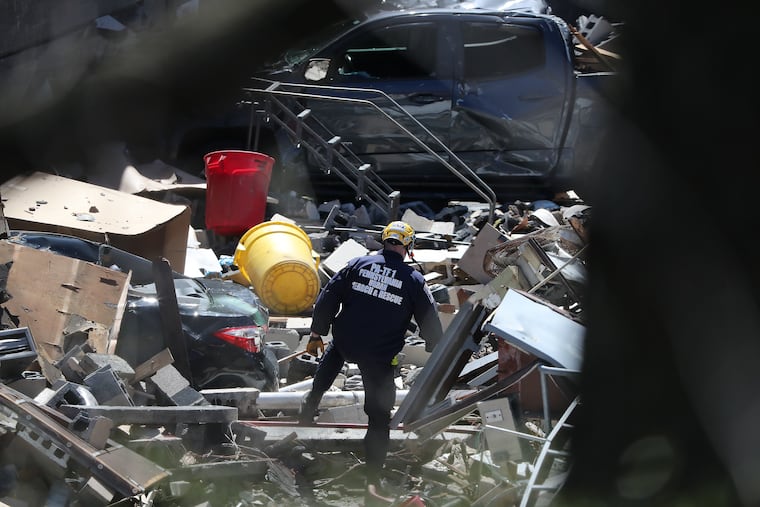Pennsylvania needs more urban search and rescue teams
A Philadelphia-based team is the only unit of its kind in the commonwealth. A second is long overdue.

On the morning of Sept. 11, 2001, the sun shone brightly. Little did we know that that beautiful day would end as the second bloodiest on American soil in history.
The dust had hardly settled when our Pennsylvania Task Force One deployed to help with the search and rescue efforts.
Task Force One was the first out-of-state urban search and rescue to assist in what became known as “The Pile,” the 1.8 million tons of wreckage left from the collapse of the World Trade Center towers.
Now, more than two decades after 9/11, some are calling for a second urban search and rescue team in Western Pennsylvania.
Once a natural disaster or terrorist incident strikes, fast delivery of the most appropriate resources is critical to save lives, limit suffering, and properly stage for recovery.
Each urban search and rescue team is composed of 70 members. These members specialize in search, rescue, medicine, hazardous materials, logistics, and planning. They include physicians, engineers, canine search teams, and other specialists. Each team should be ready to deploy within six hours of a disaster.
Task Force One is based in Philadelphia. Whether the commonwealth needs a second urban search and rescue team for Western Pennsylvania is an important conversation to have, given emergencies like the Fern Hollow Bridge collapse in Pittsburgh’s East End in 2022.
When those conversations occur, they must include a complete cataloging of emergency assets across the commonwealth to identify the specific capabilities and location of these resources in order to identify asset gaps in our search and rescue infrastructure.
To be clear, this is a challenge many states face. Today, there is an intrinsic local, state, and federal urban search and rescue capability across our nation, including specialists in chemical, biological, radiological, nuclear, and explosives, as well as swift water rescue.
The flooding this summer in my own county of Bucks, where seven lives were lost, revealed the critical need for swift water rescue capabilities and swift water rescue units ready to go when needed.
Federal Emergency Management Agency officials have a list of resources at the local level, but this information can’t be found in one central database or communicated easily between states or municipalities.
Even now, there remains no rapid process for identifying resources for addressing a catastrophic disaster affecting multiple states and regions or multiple disasters occurring at the same time.
Simply put, the lack of an instantaneous nationwide database may lead to delays in emergency response — when every second counts.
This brings us back to Pennsylvania. The need for quickly deployable and diverse assets is clear. Fortunately, the Shapiro administration stands as a strong proponent of building effective emergency response infrastructure.
Pennsylvania should consider a second urban search and rescue team based in the southwest that would operate solely within the commonwealth’s borders. If created, Pennsylvania will have to develop a long-term funding structure for its operation.
Timing and prompt action to launch a second team is critical. Task Force One will be an important component of our readiness infrastructure in the southeast as we prepare for millions of people to descend on Philadelphia in 2026 to celebrate the 250th anniversary of America’s birth. Standing up a second allied team will ensure Pennsylvania is prepared to respond quickly to emergencies anywhere in the commonwealth.
Mark S. Schweiker, who served as the 44th governor of Pennsylvania, is now executive-in-residence of Rider University’s homeland security program.